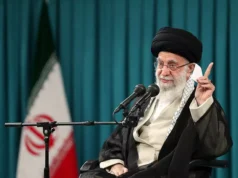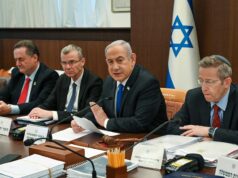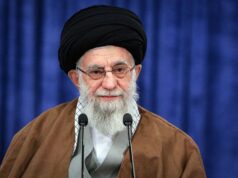Ending the Cold War Without A Bang

Who won the Cold War? It’s not a question that arises about World War II, the Napoleonic Wars or the American Civil War. But when the Cold War, communism, and the Soviet Union disappeared without a shot, pundits had a free hand theorizing precisely which act by which actor was the key to defeating the second great “ism” of the 20th Century. The role of Ronald Reagan has been subject to tugging from left and right, realists and idealists, Reagan supporters and Reagan bashers. Was it the “Reagan defense buildup” and the “evil empire” speech of the first term? According to some, it was arms control and the more conciliatory attitude toward Mikhail Gorbachev in the second term. According to others, the whole thing was, in fact, Gorbachev’s doing and Gorbachev’s mistake. Having reduced military spending and introduced domestic reforms to keep communism viable, he lost control of the process, subsequently losing the colonies and the system itself. Reagan just happened to be around.
Everyone has a theory.
In The Rebellion of Ronald Reagan, James Mann takes a synthesized view: it was some of this and some of that, and there was a fair degree of serendipity in the concurrent administrations of Reagan and Gorbachev—rather like the serendipity of the Founding Fathers in Philadelphia in 1776. It couldn’t have been orchestrated, but was the natural result of events as they occurred. Mann considers Reagan’s evolving approach to communism, the Cold War, and Mikhail Gorbachev through four aspects of his presidency: his relationship with Richard Nixon, his interest in author Suzanne Massie, the crafting of the “Mr. Gorbachev, tear down this wall” speech, and the late arms control negotiations. Through these avenues, he creates a picture of Reagan with his core beliefs intact throughout, a willingness to follow his intuition—which turned out to be better than most—and able to tell his staff when to back off. Reagan emerges as grounded but flexible; trusting but verifying. He also emerges as disconnected, uninterested in details of the nuclear negotiations he was having with the Russians, and, in fact, uninterested in the details of most issues. And, toward the end, increasingly disengaged except where it touched his core.
In other words, a Ronald Reagan both his friends and his enemies would recognize.
Nixon and Reagan
The President and the former President were “friendly, if not friends,” with entirely different views of the nature of communism. For Nixon, “the assumption was that [communism] was a permanent if unpleasant fact of life.” Détente was the best that could be hoped for and Nixon and Secretary of State Henry Kissinger were determined to pursue it. Reagan, on the other hand, viewed the Soviet system as “neither legitimate nor well-established at home.” It was, he wrote, “a temporary aberration which will one day disappear from the earth because it is contrary to human nature.” “The ash heap of history” line was not a mistake, although he later called it outdated. Communism was also, according to Reagan, secretive, duplicitous and immoral.
Reagan’s view that communism was not a permanent force in the world, according to Mann, “implied that once a Soviet leader could establish that he was straightforward rather than deceitful and was trying to change the Soviet system, then Reagan might be willing… to give credence to that leader and try to do business with him.”
The ascent of Gorbachev, a new generation Soviet, made the Washington policy community reconsider the questions, “Could the system ever be changed? Did the nature of the regime matter to the United States? Was the Cold War primarily a conflict of tanks and missiles, or was it a contest of beliefs and economic systems?”
Did Nixon peg it correctly, or did Reagan? Therein lies the core of the book. Reagan was as unalterably anti-communist as Nixon, but neither inflexible in his dealings with communists nor unwilling to explore unusual avenues to reach his bedrock goal—communism’s demise.
Suzanne Massie
One of the more unusual avenues was Suzanne Massie, author of Land of the Firebird. Neither an academic nor a policy professional, she began by volunteering her services to the NSC as an informal emissary for cultural affairs, using her contacts at the Institute of the USA and Canada (likely a KGB front, which Massie recognized). The NSC agreed, and agreed to Massie’s request to meet with Reagan before she went to Moscow.
One meeting turned into many.
Massie had an abiding love of the Russian people and a briefcase full of the sorts of personal stories that appealed to Reagan. She gave him impressions of the Russian people “as an entity separate from the Soviet government or communism,” and taught him the proverb, “Doveryai no proveryai” (“Trust but verify”). She was attuned to the role of religion in the USSR. “In Russia, I saw religion alive; beleaguered, tormented, but alive,” she wrote. She spoke Reagan’s language.
Reagan had Massie carry a message to Moscow in 1984 — word that he would like to forge a new cultural agreement—and she brought messages back. The informal channel, one of many, drove Secretary of State George Shultz to distraction, but while Reagan and Gorbachev ultimately agreed to one set of informal channels—Dobrynin in Washington and Hartman in Moscow—Massie continued to carry messages from Moscow to Reagan and back again. She encouraged Reagan to give Gorbachev breathing room.
The depth of her influence on Reagan is hard to calculate because she supported his own instinct that Gorbachev was a Soviet leader with whom he could, in fact, do business. And, while Mann paints Reagan as out of touch on details and uninterested in the mechanics of the nuclear weapons he wanted to negotiate away, his instincts were sharp. “The Reagan outlook, shared by Shultz, proved to be more accurate than that of the CIA…Reagan was acting on instinct, and at this important moment, his instincts turned out to be right.”
At perhaps the most important meeting Massie had with Reagan, early in 1987, she suggested he change the planned order of his and Gorbachev’s visits to each other’s country. He wasn’t having it, but he did permit her to take one more message to Gorbachev.
Massie finally fell afoul of a Washington whispering campaign after she tried to turn her informal position into a paid government job — including, at one point, presenting herself as a candidate for Ambassador to Moscow. Reagan’s staff moved her away from meetings with the President and over to the bureaucracy; she reappears only briefly.
The Berlin Speech
The third prism is the “Tear down this wall” speech, delivered in Berlin in June 1987. A section for policy-wonks, this one tells a convoluted tale of presidential staff bickering, speechwriting and the ways the State Department, the NSC and the speechwriters each vied for their own version of the words to be delivered: the rewrites, cross-outs, new versions, and old versions reappearing. Added to that were the logistical difficulties of producing the speech in the divided city and ensuring that the Germans—particularly the mayor of West Berlin—understood that the city was actually governed by the Four Powers and the U.S. could and would insist on what it wanted. The politics of the mayors of East and West Berlin are well covered, and East Germany’s party chief Erich Honecker’s understanding that Gorbachev’s reforms at home would ultimately deprive the Eastern Bloc of legitimacy for its ruthless rule is particularly interesting.
Reagan hardly appears here, except to insist on the Brandenburg Gate as the venue and that he would keep the line, “Mr. Gorbachev, tear down this wall.” No matter how many times or in how many ways the naysayers in State and the NSC tried to get rid of it, Reagan preserved it and it was the biggest applause line of an otherwise fairly tepidly received speech.
Mann does the readers a service by including the entire speech in the text.
Arms Control and Summits
The last section gives the most play to Gorbachev’s interests. In the second and third sections, we met Gorbachev trying to save the communist system by cutting defense spending and improving relations with Europe. In the fourth, the conservative backlash to Gorbachev’s reforms had begun to worry him and he looked for increasing concessions from the United States in exchange for an arms control treaty. He waffled on the dates of his proposed U.S. visit, demanded additional American concessions, and, when the dates were finally agreed, Gorbachev announced he would not take the grand tour. “Gorbachev would not fly to California…There would be no national parks, no farm states, no visit to the Reagans’ ranch, not even a trip to Camp David. Gorbachev made clear he would spend time only in Washington.”
But Gorbachev’s posturing masked an increasing concern that his conservative opposition might rise against him. Reagan’s concern was that the American right—conservatives in Congress and the media—might rise up against him and deny him ratification of any treaty presented.
Neither fear was realized. Gorbachev’s visit to Washington was a success—his impromptu “meet and greet” on Connecticut Avenue helped convince American public opinion that the Soviet Union had mellowed. That helped Reagan—who saw part of his role as providing the atmospherics in which the treaty could be achieved—with Republicans in Congress. The INF Treaty was submitted to Congress and ratified before Reagan’s visit to Moscow in the last year of his presidency.
The Moscow summit is almost an afterthought, except that Reagan’s instincts came to the fore one more time: Gorbachev had given Reagan a statement including the words “peaceful coexistence”—a phrase with a long communist history. Reagan’s aides rejected the statement, but Gorbachev raised it again directly with Reagan, who stuck with his aides.
Mann emphasizes Gorbachev’s continuing belief that better relations with the U.S. were essential to domestic reforms. “The Cold War supplied the rationale used by the Communist Party leadership to resist change and political liberalization at home.” The Epilogue covers the inevitable liberalization in Eastern Europe after their repressive governments knew Moscow wouldn’t step in to save them.
Two Almost-Nitpicks
First, Mann comes down squarely on the side of Gorbachev as the crucial figure in ending the Cold War. “Reagan didn’t win the cold War; Gorbachev abandoned it.” And he credits Reagan’s second term flexibility as the mechanism that allowed Gorbachev to succeed. “Reagan’s policies gave Gorbachev enough time, latitude, and prestige to proceed with his reforms, to the points where they could no longer be undone.” But without the military buildup and political confidence of the first term that convinced Gorbachev (mistakenly) that reform was essential to communist survival, Reagan’s second term would simply have been Jimmy Carter’s third term.
Second, the title. The Rebellion of Ronald Reagan contains little, if any, rebellion by Ronald Reagan—except against the mindset of the Nixon/Kissinger view that the Cold War was a perpetual fact of American life. For this, Mann concludes with slightly backhanded credit: “By recognizing Gorbachev’s significance, when many others in the United States did not, Reagan helped create the climate in which the Cold War could end.”
Shoshana Bryen is Senior Director of The Jewish Policy Center and Editor of inFOCUS Magazine.





